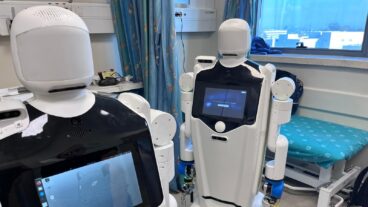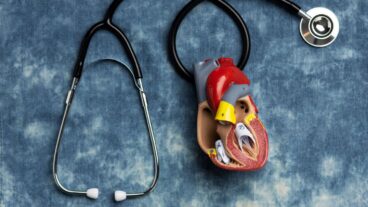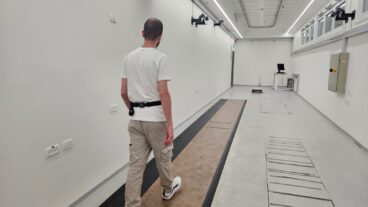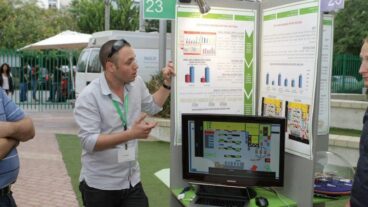The use of new electronic instruments is benefiting heart surgery patients.The patient was undergoing heart surgery, but the surgeon performing the operation wasn’t even standing next to the patient. Dr. Alon Stamler, a senior cardiothoracic surgeon at the Department of Cardiothoracic Surgery, Rabin Medical Center, Petach-Tikva, was performing the first robotically assisted, endoscopic cardiac bypass surgery in Israel. He conducted the operation while seated across the operating room at a specially designed console.
The technique being used at the Rabin Center is known as Endoscopic Atraumatic Coronary Artery Bypass. The first Endo-ACAB procedure in Israel was conducted in early November. Since then, six additional patients have had similar minimally invasive operations, using the same technique.
Stamler is the only surgeon in Israel performing robotic heart surgery. He works with a team of six to seven technicians and nurses who have been trained to work with the robotic system. Other surgeons in the cardiothoracic department are learning the technique as well.
The objective is to use a minimally invasive technique to repair the heart, providing greater accuracy and minimizing complications and recovery times. “Patients can usually go home in three or four days, or even two, if necessary,” Stamler said.
The first patient to undergo the procedure at the Rabin Medical Center was a 60-year-old man, who had previously had a coronary angioplasty. The operation performed by Stamler and his team was a single bypass operation and lasted six hours, including setup time. The patient is typically placed on a heart-lung machine in open heart surgery. In this case, the patient was not hooked-up to a heart-lung machine and the operation was conducted while his heart was beating.
The set-up of the operating room for robotic heart surgery and regular surgery is quite different, Stamler said. Before heart surgery, the robot is brought into the operating room, the room is heated and all the monitors are brought in and hooked up. The robot’s arms (whose correct placement is extremely important) are attached to the patient’s bed only when the patient is under anesthesia. Even the anesthesia itself is different for this type of operation, which is performed with a tube inserted into one lung.
The surgery is conducted using a voice-controlled robot. The robot has three arms – one arm holds the camera, or endoscope, which provides three-dimensional images and gives the surgeon a better view of the area being operated on. The other two arms essentially replace the surgeon’s own hands and provide for greater stability and accuracy.
The procedure avoids opening the chest cavity, conducting the operation using three small points of entry. The camera is inserted via a small incision in the chest. The two additional small incisions serve as entry points for the surgical instruments. The surgeon views the images of the patient’s body on a large computer screen.
“We have reports of patients who have undergone (regular) surgery who after months still suffer from chest pains, sensitivity to heat to and cold and infections, which can be quite serious.” Stamler said. “With the new technologies, we do not have to open the whole chest cavity- and can sometimes make an incision as small as five centimeters (depending on the procedure).”
It was the idea of Dr. Bernardo A. Vidne, chief of the Cardiothoracic Surgery Department at Rabin Medical Center, to introduce the robotic systems. Because of its use of robotic devices, the Rabin Center is now receiving inquiries from local high-tech startups interested in developing a variety of peripherals that could be added to improve the system.
“This is exciting because it puts us in a position of not only being a department that utilizes cutting-edge technology, but also one that actually takes part in the development of new technologies,” Stamler said.
Robotic heart surgery in Israel is now focused on bypass operations. However, in the future, it will also be used for heart valve repairs and other procedures.
“Most of these patients feel like they are getting something that not everyone else is getting and that creates a special bond,” Stamler said.












